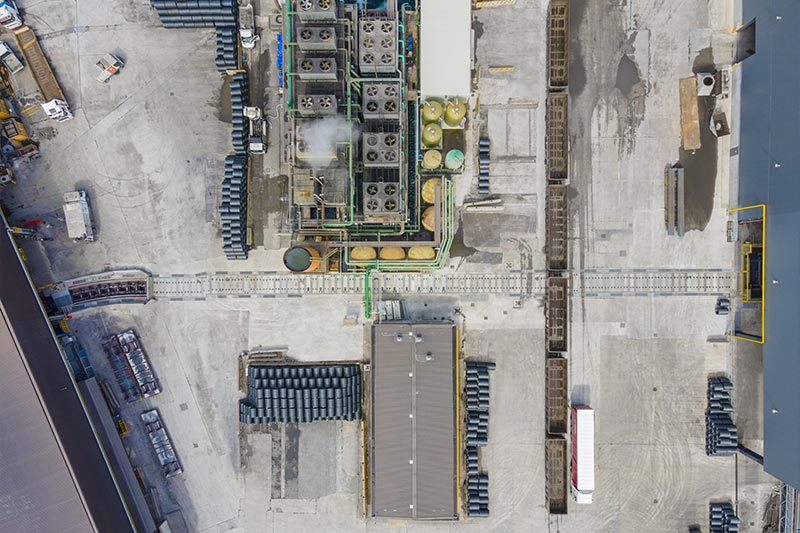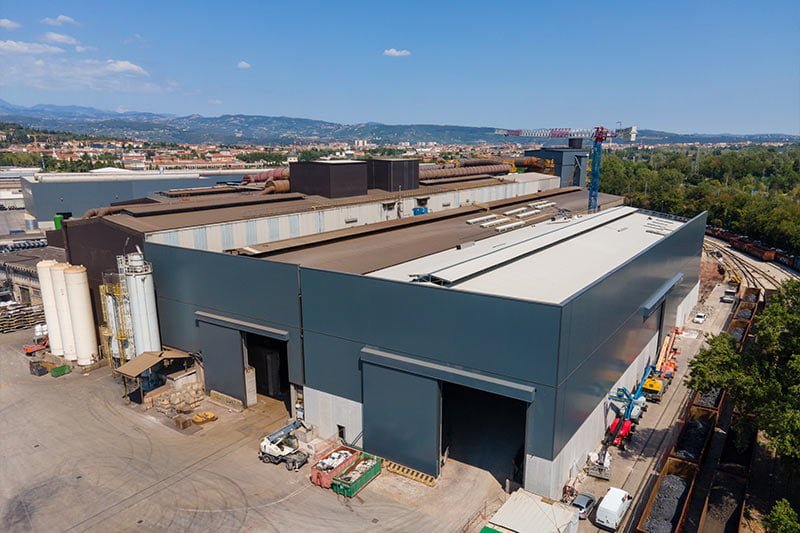The new Sustainable Steel plan for Verona
The Acciaierie di Verona plant continues its evolution. With the Masterplan industrial plan, launched in 2016, the Verona-based company of the Pittini Group has drastically improved production efficiency, with a consequent increase in the quality of its products, also through the construction of one of the most innovative wire rod rolling mills in the world. Now, with the Sustainable Steel environmental protection development programme launched in 2020, the aim is to make the plant even more sustainable and improve its energy efficiency. The plan embraces three major interventions: enclosing the scrap yard, upgrading the steelworks exhaust gas system, and the hot billet charging system.
Enclosing the scrap yard
The scrap yard is the area dedicated to storing the 100% recycled ferrous material used as the raw material for steel production. This area was initially uncovered and has now been completely enclosed within a new warehouse. Closing the area provides several advantages on the environmental front, such as the containment of dust and a significant reduction of noise to the outside environment. Furthermore, maintaining the scrap dry significantly improves the efficiency of the steel mill and also reduces energy consumption.


Upgrading the steelworks exhaust gas system
The steel plant’s exhaust gas extraction and treatment system is currently undergoing a major revamp designed to reduce emissions. When the project is completed, the release of particles into the atmosphere will be reduced by 25%, which is significantly below the limits set by current legislation.
The Billet Transfer System
Typically, billets produced by a steel mill are stockpiled in storage and then transported to the rolling mill, where they are heated to processing temperature using a preheating furnace after which they are rolled into wire rods.
With a recent renovation, an underground roller track was installed between the steel mill and the rolling mill, which allows a direct transfer of billets from the continuous casting to the rolling mill. This automated process ensures hot loading, thus eliminating the requirement of heating the billet in the preheating furnace, resulting in savings of natural gas as well as reducing Co2 emissions to the atmosphere.
Road transport between the two departments has therefore also been eliminated, providing improved production efficiency and lower energy consumption.



